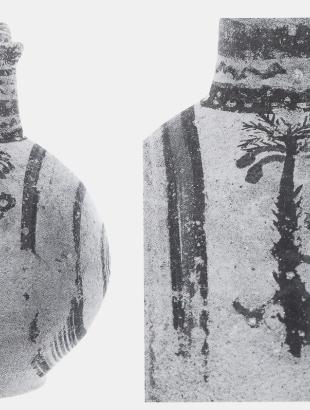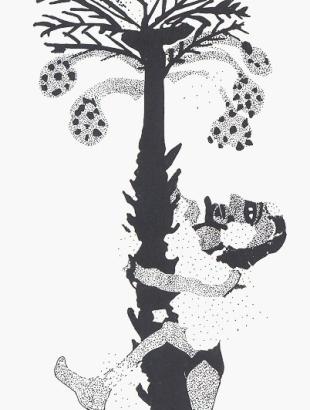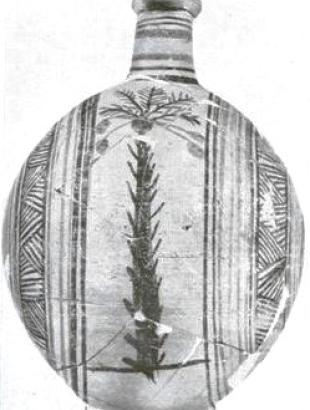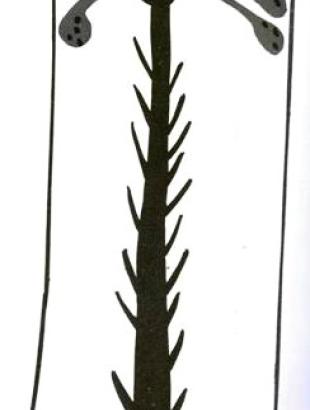Name - Origin
Χουρμαδιά. Palm tree
According to Theophrastus, the dates of Cyprus and Syria cannot be stored for later consumption but are eaten while they are still fresh (Theophrastus, 4th-3rd century BC).
Additional information and bibliography
One representative example is an oenochoe of Cypro-Archaic II period (600-475 BC) in which a human figure is depicted climbing a palm tree to collect dates. It is believed to be a scene of everyday life (Karageorghis 2001, 161-163). The vase belongs to the collection of the Cyprus Museum. A similar depiction of a phoenix, but without the presence of a human figure, is observed in another oenochoe, which belongs to a private collection and belongs to the same period. It is even possible that two oenochoi belong to the same workshop (Karageorghis 2001, 163).
Mentions to the phoenixes of Cyprus are found in the works of two ancient writers, Theophrastus (4th-3rd c. BC) and Pliny (1st c. AD).
Theophrastus in his work 'Enquiry Into Plants' mentions that in Cyprus there is a particular species of palm tree with fruit that does not ripen but it is still sweet and tasty, having a particular taste.
He states also that in Cyprus, there is a second type of palm tree with different fruit. This type of palm tree is low in height but bears more fruit from the third year onwards. According to Theophrastus, there used to be a third type of palm tree in Cyprus with wider leaves and a larger fruit (the size of a pomegranate) with a curiously elongated shape. These dates are not, he says, juicy like the other varieties, so they are chewed and then spat out (Theophrastus, Enquiry Into Plants 2.6.7-8.).
Pliny has a section in his work 'Natural History' devoted to palm trees. In this general text there is a reference to a type of phoenix from Cyprus, which is also recorded by Theophrastus (third type). The fruit, he says, may take up to a year to ripen, but in Cyprus it is consumed even when almost unripe. In Cyprus, he continues, the leaves of the tree are wider and the fruit is more round in shape. This fruit is chewed and then spat out (Pliny, Natural History 13.33)
Theophrastus, Enquiry Into Plants 2.6.7-8 in: Hort, A. translation (1990) Theophrastus-Enquiry Into Plants, Loeb Classical Library vol.1, Cambridge: Harvard University Press, 138-141
Karageorghis, V. (2001) 'A gathered of dates on a Cypro-Archaic II jug', Report of the Department of Antiquities, Nicosia: Department of Antiquities, 161-164
Karageorghis, V- Gagniers, J.D. (1974) La Ceramique Chypriote de Style Figure- illustrations et descriptions des vases, Roma: Consiglio Nazionale delle Ricerche, 144, 247, 496
Michaelides, D. (1998) 'The Food in Ancient Cyprus' in: Lysaght, P. Food and the Traveller-Migration, Immigration, Tourism and Ethnic group, Nicosia: Intercollege Press, 33
Pliny, Natural History 13.33 in: Rackham, H. Translation (1968) Pliny-Natural History, Loeb Classical Library vol.4, Cambridge: Harvard University Press, 118-119.
Natassa Charalambous.



